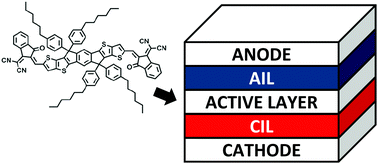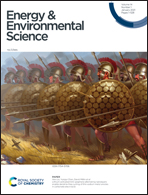Interlayers for non-fullerene based polymer solar cells: distinctive features and challenges
Abstract
Polymer solar cells based on fullerene acceptors have reached in recent years power conversion efficiencies (PCEs) approaching 13%. The advent of non-fullerene acceptors (NFAs) with the advantages of synthetic versatility, a strong absorption ability and high thermal stability has resulted in impressive PCEs of over 18% in single junction devices. The insertion of interlayers between the active components and electrodes plays a key role in charge collection, boosts the efficiency and improves the device stability. However, the mechanisms regulating the interaction between interlayer materials and active layers based on NFAs are not yet completely rationalized. This review article summarizes organic, inorganic and hybrid materials used as anode and cathode interlayers in conventional and inverted fullerene-free solar cells. Particular attention is paid to the distinctive features of the interlayers when used in non-fullerene solar cells. We will also comment on the fabrication processes with an emphasis on the transition from small area, lab devices to large area modules and on possible mechanisms which are behind.



 Please wait while we load your content...
Please wait while we load your content...